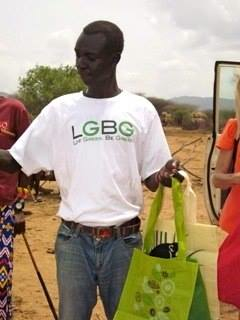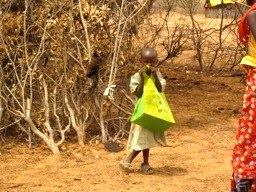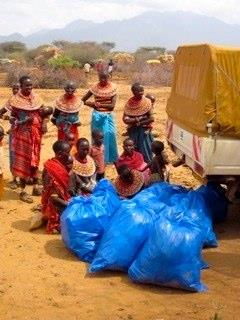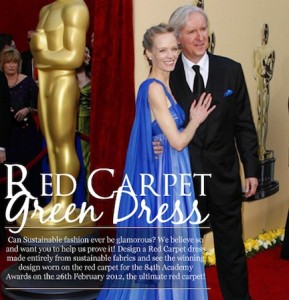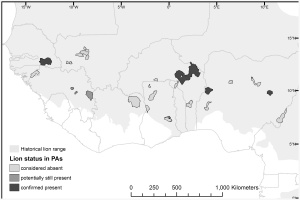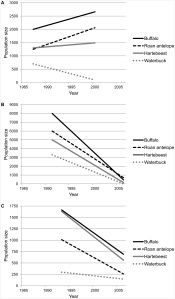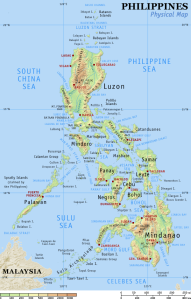
Credit: www.wochenblatt.de
Today we here at LGBG would like to remember and honor Pete Seeger, folk artist, rebel, activist and environmentalist, who truly sang songs in the key of life. Seeger died as he lived, peacefully, on January 27th at the age of 94.
Seeger will be remembered for his contributions to society largely through his music. After dropping out of Harvard in 1940, he was introduced to Woody Guthrie, with whom he toured. As a believer in communal singing, Seeger is credited with the rebirth of folk music in America. This music embraces people as a whole and generally is an expression of a way of life, historical and personal events or impending tragedies or natural disasters.
The importance of singing together
“We all go to different churches or no churches, we have different favorite foods, different ways of making love, different ways of doing all sorts of things, but there we’re all singing together. Gives you hope.”
Seeger’s songs generally had simple lyrics that provided a verbal analysis of current social and political situations. Rather than preaching a stance on the environment, civil rights or politics from a podium, Seeger stood before his audiences, young and old, with his banjo and engaged them in songs that voiced a protest while uniting the groups of people present., who often were from very different backgrounds. His music helped us to learn to think for ourselves and to question the powers that be. While many political leaders and conservative pundits try to convince us that climate change is a myth, Seeger urges us to observe our surroundings and to question “where have all the flowers gone.”
We all should get in the game of life.
“There is something about participating. It is almost my religion. If the world is still here in 100 years, people will know the importance of participating, not just being a spectator.”
Pete Seeger’s songs were important to many movements in the 20th century. Perhaps the most notable is the civil rights movement. Seeger is credited with introducing and leading protesters in the singing of “We Shall Overcome,” which became the signature song of the civil rights movement. This song consistently has brought together protesters from various backgrounds, summoning emotion, strength and courage to continue the struggle for human rights in the face of all types of adversity, including legal, educational and physical. In fact, Seeger introduced Martin Luther King to the song and even suggested that the civil rights activists form a group to be known as Freedom Singers. He stated that these “songs have accompanied every liberation movement in history. These songs will affirm your faith in the future of mankind.”[1]
Seeger also joined in the anti-war protests during the sixties. Over the years, he lent his voice and support to protests for workers’ rights, world peace and environmental conservation. He remarked that “a good song reminds us what we’re fighting for.”
As a result of his stance on most political and social issues, Seeger’s life was not without controversy. In the early fifties, he and his singing group, the Weavers, were named as Communist Party sympathizers in a magazine called Red Channel. When subpoenaed to come before the House Un-American Activities Committee to answer to charges of Communist influence in entertainment, Seeger declined to invoke his constitutional right of protection from self-incrimination. Rather, this gentleman of high principle chose to discuss his music, and he even offered to sing some of his songs. In response to the questions posed to him, he remarked, “I think these are very improper questions for any American to be asked, especially under such compulsion as this.”[2]

Credit: blogs.loc.gov
Seeger was convicted of contempt of Congress and sentenced to four years in jail. However, his conviction was overturned due to a technical flaw in his indictment. He was not retried. He saw the curtailment of offers for his group, The Weavers, to perform. He later apologized for many of his early thoughts on Stalin, but he maintained his ideas on socialism, stating that “I ask people to broaden their definition of socialism. Our ancestors were all socialists: You killed a deer and maybe you got the best cut, but you wouldn’t let it rot, you shared it.”[2] Throughout his life, he maintained the right to free thinking and inquiry.
This land is your land. This land is my land.
Folk music witnessed a resurgence in the 1960s, and with the many political struggles, the war in Vietnam and other social ills present at the time, Seeger found himself back in business with his simplistic approach of using music to encourage people to participate. He lived on 17-1/2 acres on a mountainside in Beacon, NY where he became very active in environmental efforts, including cleaning up the Hudson River. He founded the Clearwater Sloop Project, which he supported until his death.
Seeger’s commitment to the environment and sustainability through music was infectious as evidenced by the admiration and support he received by many entertainers, notably Jackson Browne and Bruce Springsteen. These singers support and appeared with him at Occupy demonstrations and other events for social causes and some even adopt Seeger’s easy enticing and uniting style in their songs. Perhaps one of the most popular is Browne’s song, Stay, which reminds us “people you got the power over what you do.”
It’s all about love.
Perhaps Pete Seeger sums his life up best in his description of his songs in the key of life.
I call them all love songs. They tell of love of man and woman,
and parents and children, love of country, freedom, beauty,
mankind, the world, love of searching for truth and other unknowns.
But, of course, love alone is not enough.[2]
Rest in peace Pete Seeger, and thank you for a job well done!
__________________
1. http://www.theguardian.com/music/2014/jan/28/pete-seeger-man-brought-politics-to-music.
2. Barnes, B. (2013, January 29). Pete Seeger: He sang of things as he saw them. The Washington Post, pp. A1, A15.
3. http://en.wikipedia.org/wiki/Folk_music

